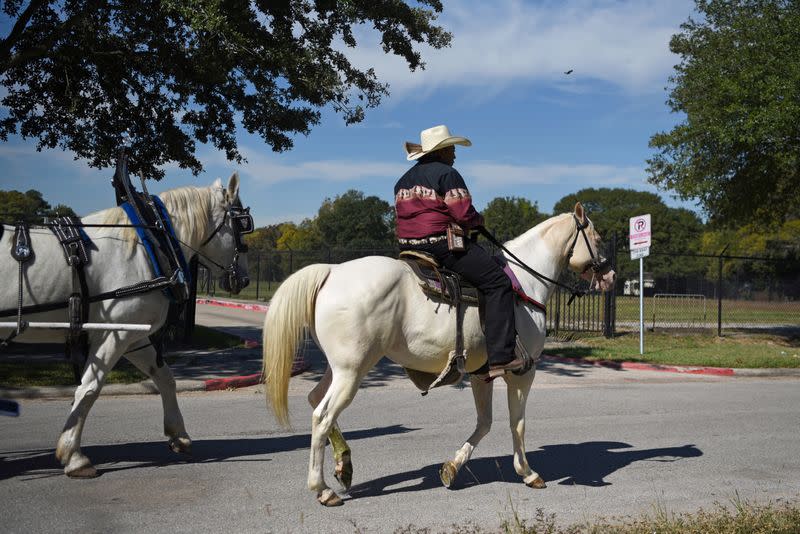As pandemic reshuffles housing, Houston's long growth spurt may be over - data firm
By Howard Schneider
WASHINGTON (Reuters) - The rush of people leaving urban areas for the suburbs because of the coronavirus may have ended one of the nation's most remarkable streaks of urban growth, according to estimates from data firm Unacast that tracked changes in the home location of cell phones over the past year.
The last time Harris County, Texas saw a population decline was back in the mid-1980s, when oil prices had crashed 50% in a few weeks, and the booming county's residency numbers, which include the city of Houston, dropped for three of the four years from 1985 to 1988.
In yet another sign of how the pandemic may be reshuffling U.S. life and economics, the data indicate Harris County lost a net of around 10,000 people to neighboring counties last year, part of a trend seen in home sale patterns, retail foot traffic, and other data nationwide.
If the estimate is confirmed when the U.S. government releases its latest county-level population numbers next month, it will end 31 years of steady growth that increased Harris County's population by around 70%, to more than 4.7 million, double the growth rate of the rest of the country.
"It mirrors what we see in other parts of the country. People are fleeing metro areas," said Unacast Chief Executive Officer Thomas Walle.
An earlier Unacast study of New York City estimated, for example, that a net of 70,000 people had left, with implications for the city's housing market, and for its shops and restaurants once the pandemic subsides.
The Unacast data is not meant as a global demographic estimate. It does not for example include the impact elevated death rates have had on different localities because of COVID-19, which has killed over 440,000 people in the United States, or the effect of changes in fertility rates and immigration patterns.
It also cannot distinguish whether the people who apparently relocated during the pandemic bought new houses in which they intend to remain, or rented and plan to return to the city.
The data, which examines whether a cell phone's overnight location switched from one month to the next, provides a "directionally" strong signal of people leaving more crowded areas for less crowded ones, Walle said.
Houston has been among the "superstar" cities that particularly in the last decade enjoyed disproportionate gains in people and jobs. It currently ranks third in population among U.S. cities and is closing in on Chicago and Cook County, for example, which like many industrial Midwest locations has been losing population since the 1970s.
If work from home and internet commerce reshuffle where people live and spend the day, it could mean a more lengthy recovery for the economy as a whole as office buildings struggle to find new tenants, restaurants and shops that rely on their business shutter, and service workers see demand for their jobs move elsewhere.
A study last year by Dallas Fed economists, using data on real estate sales and prices, foot traffic to retail locations, and other large data sets concluded that a flight from densely populated areas was well underway.
"If work-from-home becomes more prevalent and visiting amenities continues to be curbed, the desirability of large cities and dense neighborhoods would remain reduced for a long time to come," the research concluded.
(Reporting by Howard Schneider; Editing by Bill Berkrot)


